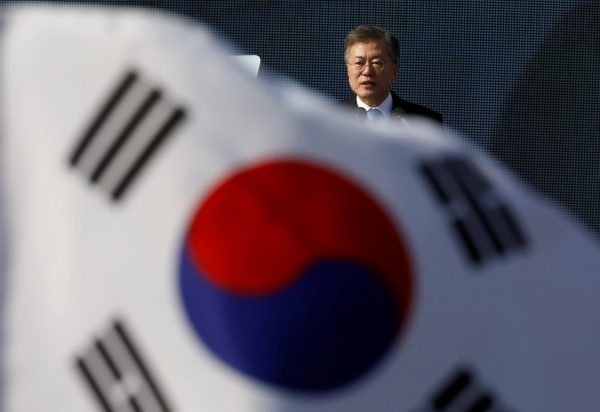Recent successes in addressing the COVID-19 outbreak have buttressed South Korea’s claims of a global middle-power role. For all intents and purposes, South Korea is a middle power (even though I’ve previously argued that it was not). Indeed, much of the recent scholarship and hopes for a middle-power revival centred on South Korea. Yet, there were always fundamental qualities that made it intrinsically distinct from the prototypes of Australia, Canada, the Netherlands, Sweden or Norway. South Korea’s distinct qualities may present a picture of middle powers after the middle-power moment.
First, South Korea is a relatively new middle power. The concept crossed into the Korean language at different times and took on a multitude of meanings, not always consistent with Western understandings.
With active government support, the concept entered South Korean foreign policy thinking in the mid-2000s and continued to evolve. Policymaker understanding remains relatively shallow and pliable. As a result, after the middle-power moment, the concept will likely stretch to include a larger number of states not traditionally associated with middle powers and encompass a broader conceptual understanding of what it means to be a middle power.
To an extent, we’ve already seen this with the formation of the grouping of Mexico, Indonesia, South Korea, Turkey and Australia (MIKTA), a middle-power grouping with a vague and uncertain purpose, which includes states not traditionally associated with middle-power diplomacy.
Second, South Korea’s foreign policy has always been less values-oriented and non-rivalrous, and instead more interest-oriented and transactional. An example is its participation in the 2003 Gulf conflict. At the request of the United States, Australia committed forces to the invasion of Iraq with a vague sense of allied reciprocity and collective defence. At the same request, South Korea demurred, committing forces to the reconstruction phase in the oil rich and relatively secure region of Kurdistan. Transactional foreign policy is often short-term with a focus on securing achievements within one presidential administration.
From this, one could assume that after the middle-power moment such states will be less inclined to promote policy as strengthening the public good of multilateral institutions, global governance and ‘good international citizenship’. Instead, middle powers will direct policy towards securing gain vis-a-vis rival states. Rather than trade liberalisation, non-proliferation or humanitarian development, ‘niche diplomacy’ after the middle-power moment may be more self-interested, marked by efforts towards trade sector dominance, one-upmanship in regional rivalries and exerting influence.
Third, as a divided state, South Korea is inherently not a status-quo state. Like other countries more recently labelled middle powers — including Turkey, Saudi Arabia and Indonesia — South Korea has claims on the existing international system and is not wed to existing structures. Controversially, and contrary to most expectations, it is also not necessarily wed to US dominance.
South Korea may arguably accept a more China-centred region, and has demonstrated a willingness to overlook and work around sensitive issues once thought fundamental to middle powers. These issues include the South China Sea (rule of law), Xinjiang and Hong Kong (human rights), Huawei, the Belt and Road Initiative (BRI) and Indo-Pacific terminology (alliance maintenance).
Reflecting this, after the middle-power moment, such states may not ultimately require the support or acquiescence of the dominant major power, but rather rest comfortably with the support of at least one regionally dominant power.
Lastly, South Korea’s diplomatic practice has not yet demonstrated the characteristic innovation, creativity and vision associated with the middle-power moment. The creation of APEC, the Cairns Group, the Canberra Group and the Ottawa Treaty still stand out as exemplars of diplomatic creativity and vision.
Rather than thematic coalition building, state–NGO resource sharing or institution building, South Korea has strong preferences for leadership-led initiatives that give more immediate returns. This means that even when innovation and vision emerge, such as with the creation of the Global Green Growth Institute (GGGI), they are all but forgotten by subsequent administrations.
Even in areas of core national interest, such as Korean Peninsula peace and security, creativity and diplomatic innovation is shunned, and the age-old tested (and failed) methods of leadership summitry preferred. After the middle-power moment, such states and their initiatives may ultimately be more about show and less about substance.
The middle-power moment may well have been an illusion. But middle powers will continue to play an important albeit different role in international relations. As scholars, it may be time to once again rethink, and redefine, the middle-power concept.
Jeffrey Robertson is a Visiting Fellow at the Asia-Pacific College of Diplomacy, The Australian National University and Associate Professor at Yonsei University, Seoul.

